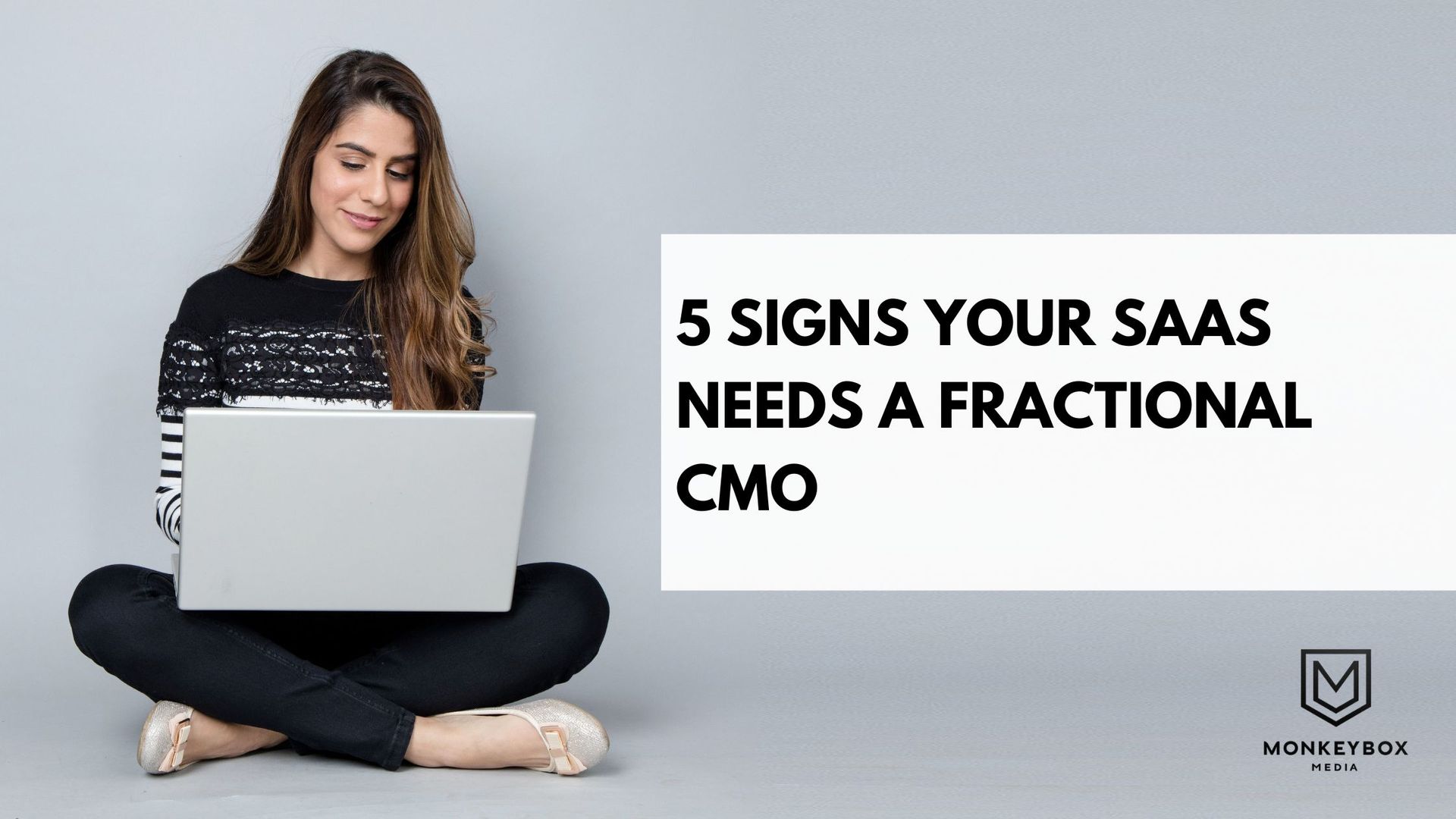Case Study: SaaS Startup Scales with Content Marketing
CloudSync , a SaaS startup, overcame poor visibility and high customer acquisition costs by switching to content marketing. Instead of relying on paid ads, they focused on creating educational content addressing workflow challenges faced by small and medium-sized teams. This shift boosted organic traffic, improved lead quality, and reduced acquisition expenses.
Here’s what worked for them:
- Audience Understanding: Identified customer pain points and tailored content to the buyer's journey stages (awareness, consideration, decision).
- Content Strategy: Published blog posts, guides, and case studies optimized for SEO and user engagement.
- Distribution: Used a multi-channel approach, including LinkedIn, email, and partnerships, to amplify reach.
- Website Upgrades: Improved site navigation, load times, and lead capture processes to enhance user experience.
- Leadership Support: Partnered with a fractional CMO to guide efforts and align marketing with business goals.
Key results included higher traffic, better conversions, and shorter sales cycles, proving that content marketing can drive growth for SaaS companies. By focusing on customer needs and consistent execution, CloudSync turned its struggles into success.
Content Marketing Strategy Framework
CloudSync took a thoughtful approach to content marketing, designing a strategy that could fuel scalable growth while staying aligned with its business goals.
Identifying Target Customers and Buyer Journey
The first step for CloudSync was understanding its audience. By diving into customer feedback and support inquiries, the company identified common pain points and recurring questions. This process helped shape an ideal customer profile and map out a buyer's journey, which spans several key stages:
- Awareness stage : Potential customers start noticing inefficiencies or limitations in their current processes.
- Consideration stage : They begin researching solutions, looking for insights and comparisons to guide their decision-making.
- Decision stage : Here, they need proof - case studies, testimonials, or other forms of reassurance to feel confident in committing.
To meet the needs of prospects at each stage, CloudSync aligned its content calendar with the journey. The result? A steady stream of educational resources, comparison guides, and actionable content designed to address specific concerns and questions as they arise.
Creating a Consistent Brand Voice
CloudSync prioritized clarity and relatability in its brand voice. By using simple, accessible language, the company ensured its content resonated with a broad audience. To keep this voice consistent across all platforms, CloudSync developed detailed brand guidelines covering tone, formatting, and messaging. This uniform approach helped foster trust and made the content instantly recognizable.
Multi-Channel Distribution and SEO
Great content is only effective if it reaches the right audience, so CloudSync adopted a multi-channel distribution strategy. The company used its blog as a central hub and expanded its reach through LinkedIn, email newsletters, and collaborations with industry partners. To increase visibility, CloudSync also focused on an SEO strategy built around long-tail keywords, improving its chances of ranking for highly specific searches.
To fine-tune its efforts, CloudSync tracked key metrics like time on page and engagement rates. This data-driven approach allowed the team to identify the most effective channels and allocate resources to those delivering the best results.
Implementation and Execution
Once CloudSync had its strategy in place, the next step was to bring those plans to life. The company transitioned into execution with a focus on detailed planning and precise action. The goal? To deliver high-quality content while building a strong foundation for long-term growth.
Content Creation and Optimization
CloudSync developed a structured process to maintain both quality and consistency in its content efforts. The team set up a regular publishing schedule that included blog posts, in-depth guides, and other formats designed to cater to different audience preferences. Each piece of content was carefully optimized using keyword research, competitor analysis, and performance tracking.
The variety of content formats addressed diverse needs. Educational blog posts offered step-by-step solutions to common workflow challenges, comparison guides helped potential customers weigh different collaboration options, and case studies highlighted real-world success stories with measurable results.
To maximize the impact of its content, CloudSync also conducted A/B testing on headlines, meta descriptions, and call-to-action buttons. For instance, headlines that promised actionable insights performed better than generic ones. Additionally, the company invested in visual content like custom graphics, screenshots, and video tutorials, which not only improved user engagement but also boosted interactions on social media. These efforts were supported by an upgraded digital infrastructure that ensured smooth delivery of content.
Website and User Experience Improvements
Great content needs a solid platform, and CloudSync knew this well. To complement its content strategy, the company revamped its website to enhance user experience. The new site architecture provided clear pathways from blog posts to product pages, making it easier for visitors to see the value CloudSync offered. Features like progressive profiling on lead magnets improved form completion rates and enriched prospect data for the sales team.
On the technical side, CloudSync implemented several upgrades to improve site performance. Image compression, caching, and streamlined code led to faster load times, reduced bounce rates, and better search engine rankings. Navigation was redesigned to align with the customer journey, offering easy access to educational content, comparison guides, and social proof materials, ensuring visitors could quickly find what they needed.
Team Structure and Leadership Support
Executing a strategy of this scale required strong leadership and a well-coordinated team. Instead of hiring a full-time Chief Marketing Officer (CMO), CloudSync partnered with Monkeybox Media to leverage fractional CMO services. This approach gave the company access to senior-level marketing expertise without the commitment of a full-time hire, offering both flexibility and cost efficiency.
The fractional CMO worked closely with CloudSync’s founder to create content calendars, set performance metrics, and ensure seamless collaboration across departments. The content team itself included full-time creators, a part-time graphic designer, and a freelance video editor, all operating within clearly defined processes and supported by robust project management tools. This structure ensured the team could consistently deliver high-quality work on time.
Regular planning meetings kept everyone aligned on goals and priorities, while performance reviews helped identify what was working and where adjustments were needed. The strategic oversight provided by the fractional CMO kept the team focused on impactful activities, while streamlined approval processes ensured that content met quality standards and deadlines.
Results and Outcomes
CloudSync's content marketing strategy brought noticeable success across various fronts. By closely monitoring progress, the company achieved measurable growth while also strengthening its brand presence and customer experience - setting the stage for lasting success.
Measurable Results and Metrics
Once the content marketing strategy was in place, CloudSync experienced a significant boost in organic traffic. Visitor engagement improved, lead generation increased, and conversion rates rose - all while keeping acquisition costs manageable. These changes also streamlined the sales cycle, making it noticeably shorter and more efficient.
Brand and Customer Experience Impact
The benefits weren’t just about numbers. CloudSync’s refined messaging and leadership in the industry elevated its visibility. This led to more opportunities for speaking engagements and media coverage, further cementing its reputation. Customers felt more assured in their purchasing decisions, thanks to the enriched support resources which also cut down on routine service inquiries. This smoother onboarding process not only built trust but also encouraged stronger customer advocacy.
ROI and Performance Tracking
To measure the strategy’s effectiveness, CloudSync adopted a robust performance tracking system. This allowed the team to directly connect content efforts with revenue growth and make continuous improvements. Regular performance reviews provided valuable insights, helping to fine-tune both content creation and distribution. The partnership with a fractional CMO played a key role in interpreting data and refining strategies. For SaaS startups aiming to scale, fractional CMO services - like those from Monkeybox Media - can be a game-changer in building a strong content marketing framework.
These results highlight the importance of combining data-driven insights with strategic adjustments, paving the way for the next section on key lessons and best practices in content marketing.
sbb-itb-6e0f5a2
Key Lessons and Best Practices
CloudSync’s evolution from a struggling startup to a content marketing success story highlights valuable lessons for SaaS companies. Their journey uncovers strategies that work and pitfalls to avoid when building an effective content marketing approach.
Customer-Focused Content and Messaging
One of the standout lessons from CloudSync’s success was their shift to prioritizing customer needs over simply showcasing product features. Instead of focusing on what their product could do, they zeroed in on the challenges their audience faced - like data security concerns and integration headaches. This shift was rooted in deep customer research, including interviews and analysis of support data.
By addressing these real-world challenges, CloudSync created content that resonated with prospects at every stage of their journey - whether they were just starting to explore solutions, evaluating options, or ready to make a decision. This customer-first approach not only improved engagement but also boosted conversion rates. It laid the foundation for the leadership and teamwork that became critical to their turnaround.
Leadership and Team Coordination
Strong leadership and seamless collaboration played a pivotal role in CloudSync’s transformation. Bringing in a fractional CMO helped align marketing efforts with broader business goals, clarify priorities, and establish accountability across teams.
The team quickly realized that content marketing couldn’t succeed in isolation. It required input and cooperation from marketing, sales, product, and customer success teams. Regular cross-departmental meetings ensured everyone understood how content supported their specific objectives. Meanwhile, ongoing performance reviews allowed the team to adjust strategies based on measurable outcomes.
For startups that can’t afford a full-time marketing executive, seeking strategic expertise on a part-time basis can be a smart alternative. It offers the guidance needed to set up effective systems while building internal capabilities. However, CloudSync’s early struggles also revealed key mistakes that other SaaS companies should avoid.
Common Mistakes and How to Avoid Them
CloudSync’s initial missteps offer a cautionary tale for SaaS startups venturing into content marketing. One major issue was their scattered, multi-channel approach, paired with inconsistent publishing. This lack of focus disrupted audience engagement and hurt their SEO performance. By streamlining their content calendar and batching production, they achieved a more consistent and manageable workflow.
Another stumbling block was neglecting SEO basics. While they were producing quality content, poor keyword research and weak on-page optimization limited their organic reach. Once they incorporated SEO best practices, their traffic and visibility improved significantly.
They also fell into the trap of chasing vanity metrics - like social media likes and page views - rather than tracking metrics tied to customer acquisition and revenue. Refocusing on metrics that mattered to the bottom line helped them refine their strategy and deliver better results.
Lastly, CloudSync initially overlooked the value of repurposing content. They later learned to stretch the impact of a single in-depth piece by breaking it into smaller formats, such as social media posts, email segments, and webinar topics. This approach maximized the return on every content effort, making their strategy far more efficient.
Conclusion
CloudSync's journey from struggling with visibility and conversions to becoming a content marketing success story shows the power of a strategic, customer-first approach. By moving away from feature-heavy messaging and focusing on solving real customer problems, they built meaningful connections with their audience. Their commitment to SEO best practices and a steady publishing schedule helped them attract organic traffic that translated into paying customers. This shift not only elevated their market presence but also laid the foundation for a leadership-driven transformation.
The CloudSync case demonstrates how expert fractional CMO guidance can align marketing efforts with business goals, improve team collaboration, and deliver measurable results. For SaaS startups looking to achieve similar success, Monkeybox Media’s fractional CMO services can provide the expertise needed to turn scattered content efforts into a unified growth strategy.
Key elements like deep customer research, regular content creation, strong SEO practices, and collaboration across teams directly contribute to business growth by prioritizing metrics that drive revenue over superficial ones.
CloudSync’s success offers a roadmap for other SaaS startups. With thoughtful execution, content marketing can become a cost-effective alternative to paid ads, building brand authority and fostering lasting customer relationships. For startups with limited budgets, this approach provides a sustainable way to achieve long-term growth.
With the right mix of strategy, execution, and leadership, content marketing can help even the most challenged SaaS businesses evolve into thriving, scalable companies.
FAQs
How did CloudSync identify the content their audience wanted most?
CloudSync took a thoughtful approach to understanding their audience's content preferences. They started by diving deep into research, aligning their findings with their business goals. By evaluating their digital footprint and observing how their audience interacted online, they gained valuable insights into what resonated most. This included analyzing market trends and spotting areas where content was lacking. With this knowledge, they crafted strategies that delivered content their audience genuinely cared about, making their messaging more engaging and meaningful.
How did a fractional CMO contribute to CloudSync's content marketing success?
The fractional CMO was instrumental in driving CloudSync's growth by offering seasoned leadership and a well-defined strategic direction. They optimized content marketing initiatives, ensured team alignment, and introduced data-focused strategies to enhance overall performance.
These efforts delivered tangible outcomes, such as a notable rise in marketing-qualified leads (MQLs), increased organic traffic, and substantial pipeline expansion. This enabled CloudSync to scale efficiently and meet its SaaS objectives.
How can SaaS startups achieve content marketing success like CloudSync without a big budget?
SaaS startups can thrive in content marketing even with a tight budget by focusing on organic growth strategies . The key is to produce high-quality content that addresses customer challenges and aligns closely with their needs. Pairing this with smart SEO practices and sticking to a consistent publishing schedule can help draw in and keep your audience.
To stretch your budget further, take advantage of free or affordable tools like social media platforms and analytics software to monitor performance and fine-tune your strategy. Engaging with online communities, participating in forums, and crafting shareable, value-packed content are also great ways to expand your reach without breaking the bank.




